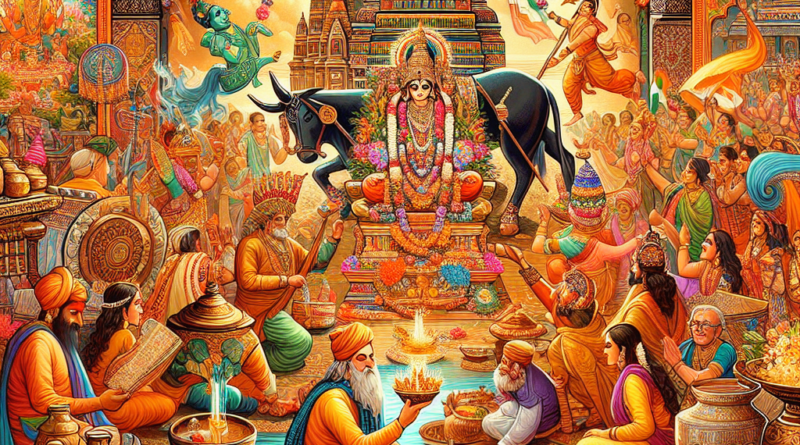Colorful celebrations: Hindu festivals bring communities together
Title: The Rich Tapestry of Hindu Festivals: A Blend of Tradition and Rajput Culture
Hindu festivals hold a special place in the hearts of millions around the world, serving as a time for spiritual reflection, cultural celebration, and community bonding. These festivals are not just religious observances but also showcase the rich heritage and traditions of the Hindu and Rajput communities. With a history dating back thousands of years, these festivals continue to be celebrated with great fervor, blending ancient customs with contemporary practices.
Colorful celebrations
The origins of Hindu festivals can be traced back to ancient scriptures such as the Vedas and Puranas, which laid the foundation for religious rituals and observances. Each festival has its own unique significance, often rooted in mythology and legends that highlight the triumph of good over evil, the victory of light over darkness, or the changing of seasons.
In the context of Rajput culture, these festivals take on added layers of meaning. The Rajputs, known for their valor, chivalry, and commitment to honor, have contributed significantly to the cultural landscape of Hindu festivals. Many Rajput rulers were patrons of the arts and encouraged the celebration of festivals as a way to unite their subjects and showcase their rich cultural heritage.
Contemporary Relevance
In modern times, Hindu festivals continue to play a vital role in the lives of people, serving as a way to connect with their roots, express devotion to the divine, and strengthen familial and community bonds. These festivals are celebrated with great enthusiasm across India and in Rajput communities around the world, keeping age-old traditions alive while also adapting to the changing times.
One of the most popular Hindu festivals, Diwali, holds special significance for both Hindus and Rajputs. Known as the Festival of Lights, Diwali celebrates the return of Lord Rama to Ayodhya after his victory over the demon king Ravana. For Rajputs, Diwali is a time to honor their ancestors, perform rituals to protect their families, and showcase their martial skills through traditional dances and performances.
Holi, the festival of colors, is another beloved festival that transcends religious and cultural boundaries. Rajputs are known for their grand Holi celebrations, where communities come together to play with colors, dance to traditional folk music, and savor festive delicacies. Holi symbolizes the arrival of spring, the blossoming of new beginnings, and the triumph of love and joy over hatred and discord.
Navratri, dedicated to the worship of the goddess Durga, is a nine-night festival celebrated with great pomp and splendor by Hindus and Rajputs alike. During Navratri, devotees fast, pray, and participate in vibrant dance performances such as Garba and Dandiya Raas. For Rajputs, Navratri is a time to honor the divine feminine energy, showcase their traditional attire and jewelry, and renew their commitment to upholding dharma (righteousness).
In conclusion, Hindu festivals are a testament to the enduring legacy of Hindu and Rajput culture, blending ancient traditions with contemporary practices to create a tapestry of celebrations that resonate with people of all backgrounds. These festivals serve as a reminder of the values of faith, unity, and resilience that define the Hindu and Rajput communities, making them an integral part of India’s cultural fabric. As we continue to celebrate these festivals with joy and reverence, we pay homage to our ancestors and pave the way for future generations to cherish and uphold our rich cultural heritage.


Sanatan dharm amar rhe